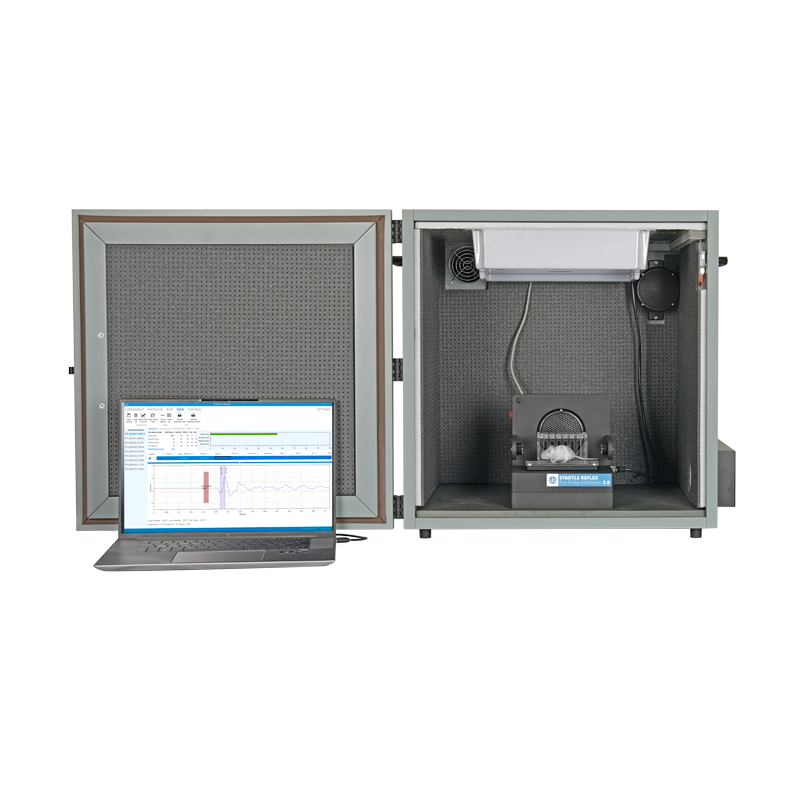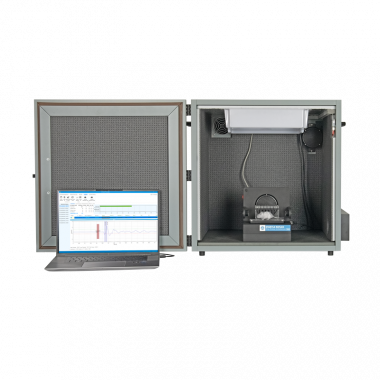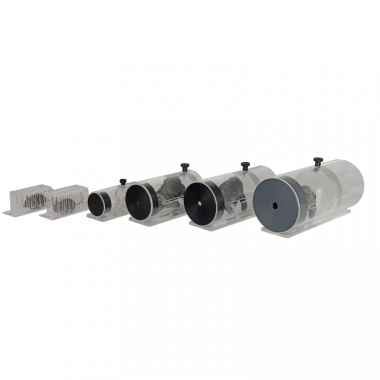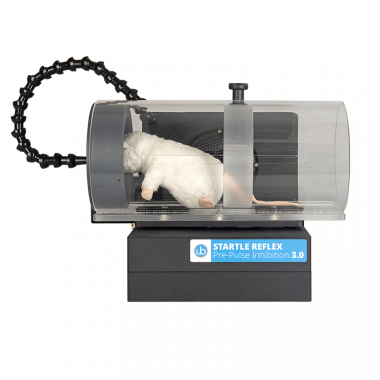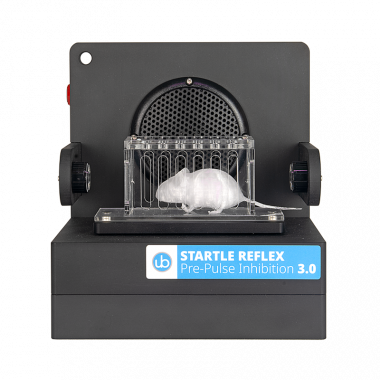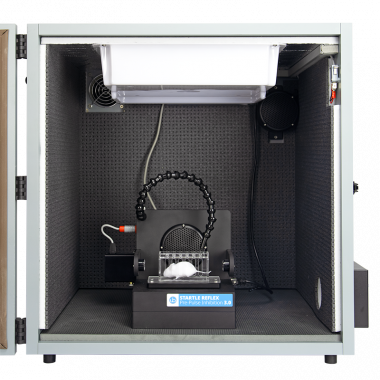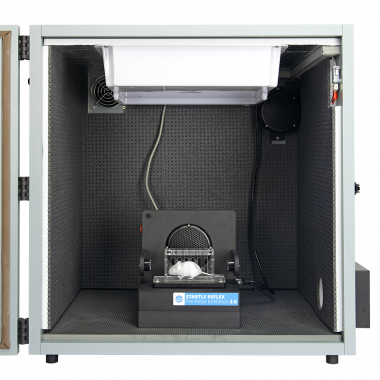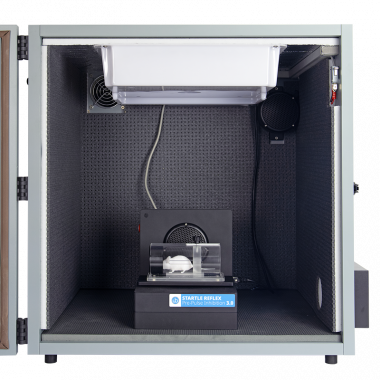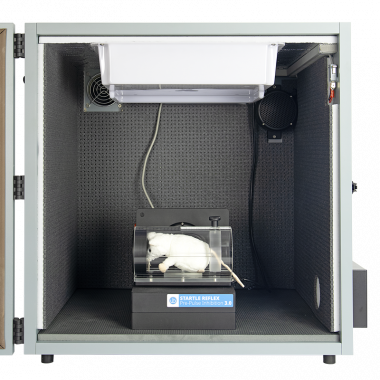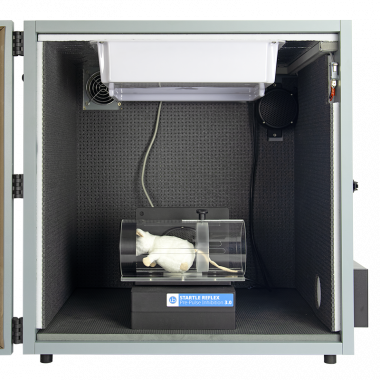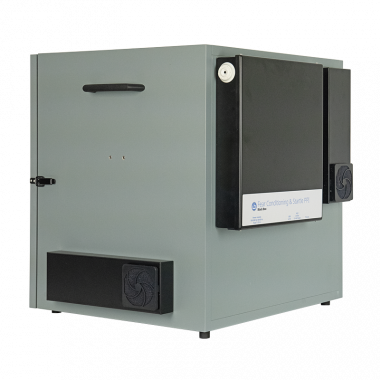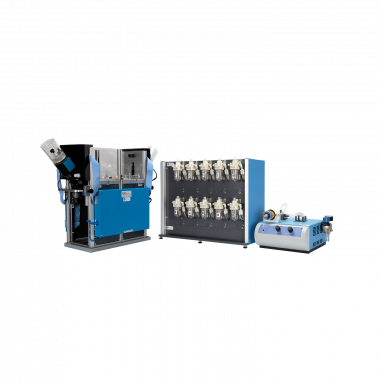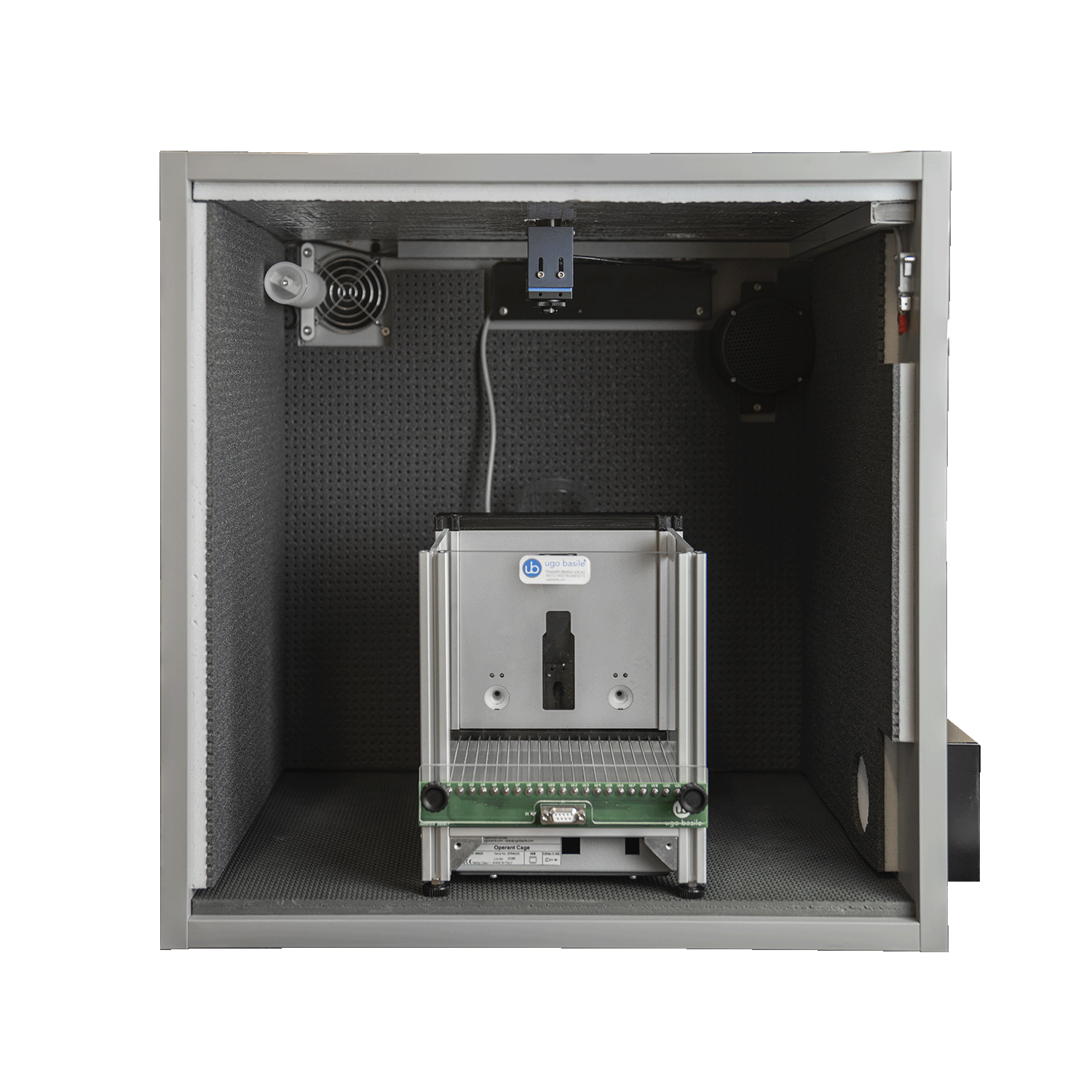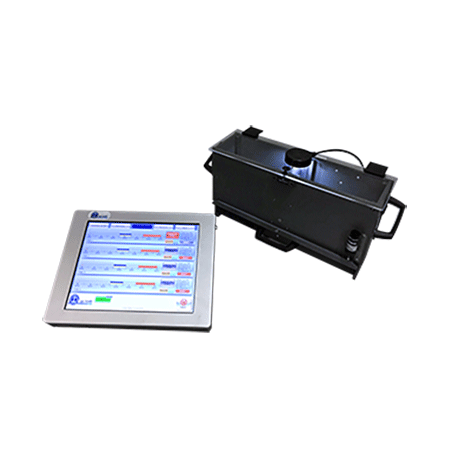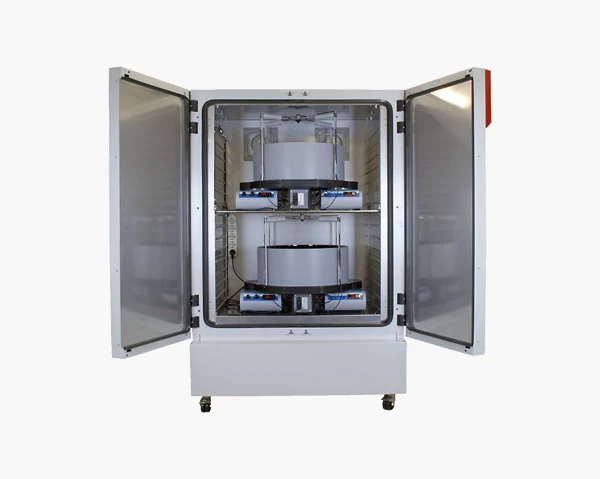Background
Startle Prepulse Inhibition (PPI) is an experimental paradigm commonly used in rodents, such as mice and rats, to study sensorimotor gating, which refers to the brain's ability to filter out irrelevant sensory stimuli and prevent them from overwhelming the processing of more important stimuli.
Sensorimotor gating refers to the ability of a sensory event to suppress or decrease a motor response, in this case, a startle response
The Startle PPI paradigm has been widely used in neuroscience research to study sensorimotor gating deficits in different animal models, including genetic mouse models and those induced by pharmacological agents. It has also been employed to investigate the neural mechanisms underlying sensorimotor gating and to evaluate the effects of potential therapeutic interventions for disorders like schizophrenia, where PPI deficits are often observed.
A typical experiment includes a startle baseline measurement as a response to a lound sound (more rarely to a light or air-puff). A pre-pulse stimulus is delivered shortly before the loud stimulus and is supposed to decrease the startle reaction in healthy animals. Normally the time between trials is randomized to ensure that the animal response is not influenced by previous stimuli.
Researchers can manipulate various experimental parameters to investigate the factors influencing PPI, such as the intensity of the prepulse, the interval between the prepulse and startle stimulus (known as the prepulse-to-pulse interval or PPI interval), and the genetic or pharmacological manipulations of the animals.
As data analysis, the pulse alone startle reflex provides an index of the animal reaction to the startle pulse in terms of maximal peak, the pre-pulse alone startle reflex provides an index of the animal reaction to the pre-pulse startle in terms of maximal peak and the %PPI indicates the inhibition of the startle reflex.
The %PPI is calculated as the decrease of the startle response after the pre-pulse is delivered, divided by the startle amplitude and is calculated for each of the pulse intensities).
Complete set up, ready to go
The Ugo Basile system is fully automated both for the preparation of the procedure and for the analysis of data. Main features include:
- Automatic detection of Startle Reflex in mice and rats.
- A typical system combines the following elements:
- Dedicated Software;
- Up to 4 Isolation Cubicles that include an infrared (I.R.) light, a loudspeaker and a silent fan (under 50 dB), all conveniently positioned inside the sound attenuating box;
- Stimulating/Recording Platform: one model for mice, one model for rats.
Different animal holders to match animal dimensions.
- Flexible testing, easy to set up. Simply define trial number, sound and light stimulus and timing of experimental sequences (all fully randomizable):
- Pulse
- Pre-pulse
- Inter-Pulse Interval
- Inter-Stimulus Interval

